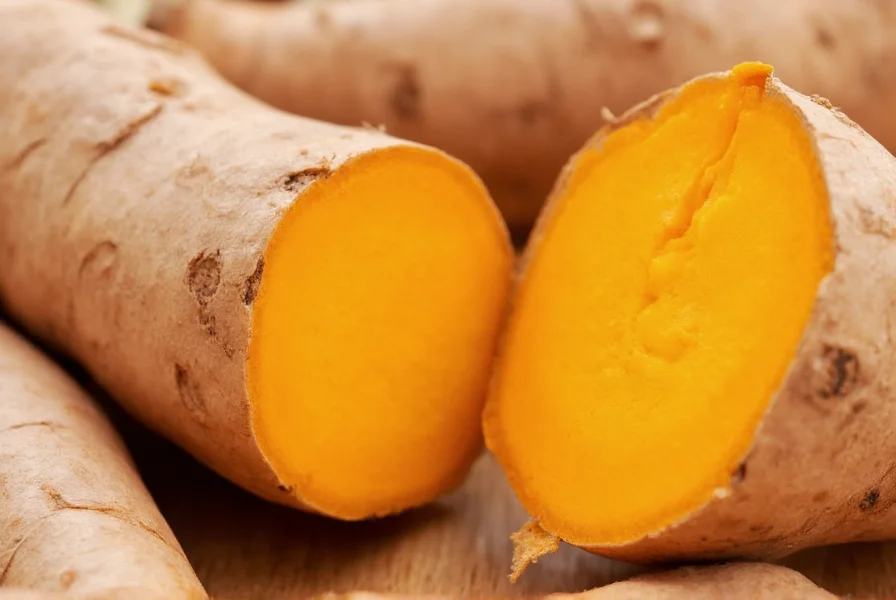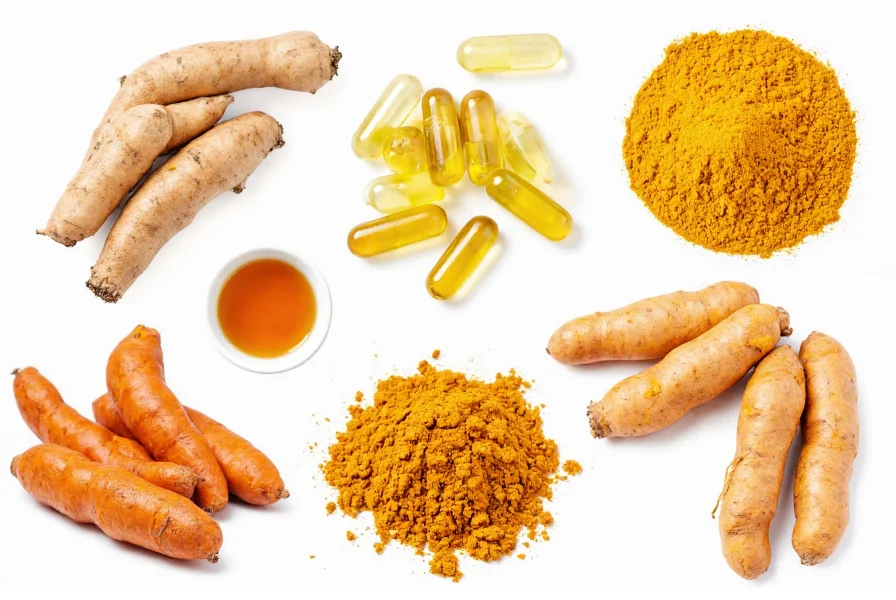Turmeric isn't just a kitchen staple—it's a botanical marvel with a rich history spanning millennia. When you define turmeric, you're exploring one of nature's most colorful and versatile plants. This perennial herb grows up to three feet tall in warm, humid climates and produces beautiful white or yellow flowers alongside its valuable underground stems.
Scientific Classification and Botanical Characteristics
The precise scientific definition of turmeric identifies it as Curcuma longa, a member of the Zingiberaceae family, which also includes ginger and cardamom. Unlike many spices that come from seeds, turmeric's value lies in its rhizomes—horizontal underground stems that store nutrients for the plant.
When examining fresh turmeric root, you'll notice its deep orange interior contrasts dramatically with its brownish outer skin. This visual characteristic immediately distinguishes it from its ginger cousin, which has a paler yellow interior. The plant typically reaches maturity in seven to ten months, requiring specific tropical conditions to thrive.
| Characteristic | Description |
|---|---|
| Scientific Name | Curcuma longa |
| Family | Zingiberaceae (Ginger family) |
| Native Region | South Asia and Southeast Asia |
| Active Compound | Curcumin (2-8% by weight) |
| Plant Height | Up to 3 feet (1 meter) |
Physical Properties and Sensory Characteristics
Understanding how to define turmeric requires examining its physical properties. Fresh turmeric root has a tough, knotted exterior with a bright orange flesh that stains easily. When dried and ground, it becomes the familiar golden-yellow powder found in spice racks worldwide.
The spice delivers a distinctive earthy, slightly bitter flavor with subtle peppery notes and a warm aroma. Its coloring power is remarkable—one small piece can transform an entire dish's appearance. This intense pigmentation comes from curcuminoids, with curcumin being the most prominent at approximately 2-8% of the root's composition.

Historical Significance and Cultural Uses
The history of turmeric stretches back more than 4,000 years, with evidence of its use in ancient Indian Vedic culture. Early civilizations valued it not only as a culinary ingredient but also for textile dyeing, religious ceremonies, and traditional healing practices.
In Ayurvedic medicine, practitioners have used turmeric for centuries to support digestion, reduce inflammation, and promote overall wellness. Traditional Chinese medicine also incorporated turmeric for similar purposes. The spice traveled along ancient trade routes, reaching Europe through Arab merchants, where it was sometimes called "Indian saffron" due to its coloring properties.
Culinary Applications Around the World
When you define turmeric in culinary terms, you discover its role as a fundamental ingredient across multiple global cuisines. In Indian cooking, it's essential for curries, rice dishes, and lentil preparations. Southeast Asian cuisines use it in marinades, soups, and traditional medicines. Middle Eastern dishes incorporate it into spice blends like za'atar.
Chefs appreciate turmeric for more than just its color—it adds depth and complexity to dishes while complementing other spices. When cooking with turmeric, many professionals recommend combining it with black pepper and a healthy fat to enhance curcumin absorption, a practice supported by modern nutritional science.
Different Forms of Turmeric
Turmeric appears in several forms that serve different purposes:
- Fresh turmeric root - Resembles ginger but with orange flesh, available in many grocery stores
- Ground turmeric - The most common spice form, made from dried and pulverized rhizomes
- Turmeric extract - Concentrated form often used in supplements
- Turmeric oil - Distilled essential oil used in aromatherapy and topical applications
Each form offers different concentrations of active compounds and serves specific culinary or therapeutic purposes. When shopping for turmeric, look for vibrant color and strong aroma as indicators of freshness and potency.

Storage Recommendations
Proper storage maintains turmeric's quality and extends its shelf life. Keep ground turmeric in an airtight container away from light and heat, where it will retain optimal flavor for 6-12 months. Fresh turmeric root lasts 2-3 weeks refrigerated in a sealed container or up to 6 months frozen.
Exposure to air, light, and moisture degrades turmeric's curcumin content and diminishes its vibrant color. For maximum benefit, purchase smaller quantities more frequently rather than large amounts that may lose potency before use.
Common Questions About Turmeric
Many people searching to define turmeric have follow-up questions about its properties and uses. Understanding these aspects helps clarify turmeric's role in both culinary and wellness contexts.
What's the difference between turmeric and curcumin?
Turmeric is the whole plant and spice, while curcumin is the primary active compound found within turmeric (making up about 2-8% of the root's composition). Think of turmeric as the entire orange and curcumin as the vitamin C within it—curcumin is just one component of the whole turmeric plant, though it's the most studied for health benefits.
Can you eat raw turmeric root?
Yes, fresh turmeric root can be consumed raw, though its strong, earthy flavor may be intense for some palates. Many people grate small amounts into smoothies, juices, or salad dressings. When using raw turmeric, remember that a little goes a long way due to its potent flavor and staining properties.
Why does turmeric stain so easily?
Turmeric's powerful staining ability comes from curcumin, its main pigment compound. Curcumin binds strongly to proteins in skin, fabrics, and surfaces, making stains difficult to remove. To prevent stains when handling turmeric, wear gloves and use dedicated cutting boards. For existing stains, immediate treatment with soap and cold water works best.
How much turmeric should I use in cooking?
When incorporating turmeric into recipes, start with 1/4 to 1/2 teaspoon of ground turmeric per serving, as its flavor can dominate other ingredients. Fresh turmeric requires about three times the amount of dried (1 inch fresh ≈ 1 teaspoon ground). Remember that turmeric's color develops gradually during cooking, so add it early in the cooking process for best results.
Does turmeric have any side effects?
When used as a culinary spice in normal food amounts, turmeric is generally safe for most people. However, extremely high doses or prolonged use of turmeric supplements may cause digestive discomfort in some individuals. Those with gallbladder issues or taking blood-thinning medications should consult healthcare providers before consuming large amounts. The culinary use of turmeric as a spice presents minimal risk for most people.











 浙公网安备
33010002000092号
浙公网安备
33010002000092号 浙B2-20120091-4
浙B2-20120091-4